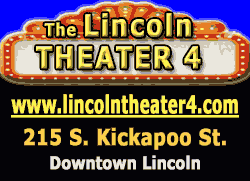|
 Nevertheless, Mundy, born in 1918 in Atlanta, Ga., as Francisco
Eduardo Menendez, played an important role in the early years of
NASCAR racing, both as a spokesman and a competitor. Nevertheless, Mundy, born in 1918 in Atlanta, Ga., as Francisco
Eduardo Menendez, played an important role in the early years of
NASCAR racing, both as a spokesman and a competitor.
And there's a good reason for his absence from the famous photo --
Mundy volunteered to hold the flash for the photographer who snapped
the picture.
Ken Martin, the senior manager for archive development at NASCAR
Productions, recalls interviewing Mundy roughly a decade before his
death at 90 years old in 2009, as one of the last survivors of the
meeting at the Streamline.
"Frank said, 'I was holding the flash,'" Martin said. ""That was
probably not the smartest thing I ever did. I missed out being in
the picture.'
"But who knew in 1947 the significance of that photo?"

Mundy is featured in the first of a series of five short videos
produced by NASCAR in celebration of Hispanic Heritage Month.
Available on NASCAR.com and NASCAR.com/espanol, the videos help tell
the story of the first Latino drivers of the 1950's and feature
interviews from today's leading Hispanic personalities.
Mundy had an amazing history even before becoming involved in the
early days of NASCAR racing. He was a personal driver for Gen.
George S. Patton in World War II and competed as a daredevil driver
with Jimmy Lynch's Death Dodgers at the 1939 New York World's Fair.
Motorcycle racing brought Mundy to Daytona Beach, where a chance
meeting with Bill France Sr. at one of the gas stations that France
operated led to a strong friendship. In the fledgling days of
NASCAR, Mundy served as an advance man for the sanctioning body.
"With his thrill show experience, he was a good talker," Martin
said. "He would go as an advance guy and talk to the local writers.
He was a good spokesman for the sport."
Mundy also raced. He won three events in NASCAR's top series in 1951
and six times in the NASCAR Convertible Series in 1956.
The first Daytona 500, in 1959, featured two drivers from Peru with
Holman & Moody equipment. Raul Cilloniz finished 12th in the
inaugural race. Eduardo Dibos ran 48th, thanks to a suspension
failure, but returned to compete in the Firecracker 250 later that
year, qualifying third and finishing fifth.

Mexican driver Pedro Rodriguez also made his mark. In his third
start in what is now the NASCAR Sprint Cup Series, the versatile
driver started 12th and finished fifth in the 1965 World 600 at
Charlotte.
Cuban-born Felix Sabates has been an owner in the NASCAR Sprint Cup
Series since 1989, fielding cars under the SABCO Racing banner
before partnering with Chip Ganassi in Chip Ganassi Racing with
Felix Sabates at the turn of the century.
Sabates, however, had no familiarity with NASCAR racing when he came
to United States in 1961.
"I was 16 years old and I came by myself," Sabates said. "I was
alone. I didn't know what NASCAR was. I didn't know what car racing
was, other than Formula One. They used to race in Cuba. They used to
have Formula One until (Juan Manuel) Fangio got kidnapped by the
rebels, and then there was no more racing in Cuba.
[to top of second column] |

"I didn't know what NASCAR was until I got to North Carolina, and
all of a sudden, there we are, right in the middle of NASCAR
country. I went to a couple races. I went to Darlington and
Rockingham, and I said, 'Man, it would be cool to one day own one of
these teams or drive one of these cars.'"
Ganassi brought Juan Pablo Montoya to Sprint Cup Racing as a
full-time driver in 2007, but the winner of seven Formula One races
and the Indianapolis 500 didn't enjoy similar success in the stock
car ranks, though he won two road course races at NASCAR's highest
level.
"Montoya proved one thing -- coming out of an open-wheel car and
getting into one of these cars is a whole different animal," Sabates
said.
Sabates also noted that the recent construction of oval tracks in
Mexico and the establishment of the NASCAR Mexico Series has started
to make a difference in the perception of Latino drivers, who,
historically, have grown up on road courses.
A prime example is Joe Gibbs Racing driver and NASCAR Drive for
Diversity graduate Daniel Suarez, who has distinguished himself in
both the NASCAR Xfinity Series and is featured in the video series
celebrating Hispanic Heritage Month.

"I happen to know him very well on a personal basis," Sabates said.
"I eat with him quite often. He comes to my house. He's a wonderful
kid. He's a hell of a driver. The only thing ... if you're with an
organization as good as Gibbs is -- and they are good; they've got
four very good cars -- what happens a year from now?
"I think he's ready to go in a Cup car, not next year but the
following year -- '17. Where's the kid going to go?"
Sabates believes Suarez will be a superstar in the sport. Based on
his own experience, that's not an outlandish dream. After all,
Sabates was a teenager working for minimum wage when he first
fantasized about owning a NASCAR team.
"I was just dreaming that I could own one of these things," Sabates
recalled from his first trip to Darlington. "Little did I think
that, 30 years later, I'd still be in love with NASCAR."
-----------------------------------------------
[© 2015 Thomson Reuters. All rights
reserved.]
Copyright 2015 Reuters. All rights reserved. This material may not be published,
broadcast, rewritten or redistributed.
 |